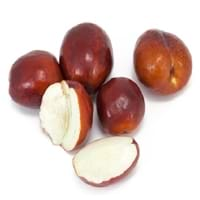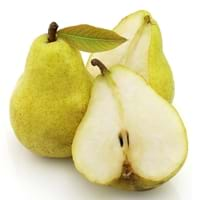Health Benefits
Cancer prevention, Diarrhea treatment, Improves muscular strength, Liver health, Maintains hormonal balance, Reduces nervous tension, Reduces blood circulation problems, Reduces stress, Regulation of heart rate, Treatment of hysteria
Arthritis prevention, Cancer prevention, Gout treatment, Heart care
General Benefits
Anti oxidant properties, Digestive aid, Flu treatment, Helps in weight loss, Strengthens bones, Treatment of common cold
Anti-inflammatory properties, Boosts immune system, Controls blood pressure, Controls blood sugar levels, Cures fever, Digestive aid, Sore throat treatment
Skin Benefits
Heals sunburn, Hydrates skin, Reduces wrinkles, Skin rejuvenation, Skin revitalization
Reduces wrinkles, Treatment of acne
Hair Benefits
Promotes longer and healthier hair, Protects hair
Promotes longer and healthier hair, Shiny hair
Allergy Symptoms
Abdominal pains, Breathing difficulty, Diarrhea, Hives, Itching in eyes, Itching of nose, Nasal congestion, Redness of eyes, Runny nose, Sneezing, Wheezing
Anaphylaxis, Digestive Problems, Itching, Skin Rashes, Swelling
Side Effects
Decrease in blood sugar levels, Intense headache
Allergic reaction
Lactating Women
Not Available
Yes
Best Time to Eat
As a snack in the late afternoon, Don't consume at night and before bed, Morning time (before lunch), Strictly avoid empty stomach
As a snack in the late afternoon, Don't consume at night and before bed, Eat the fresh ones, avoid mixing with any other foods, don't eat after meal., Morning time (before lunch)
Vitamin B5 (Pantothenic Acid)
Not Available
Vitamin B9 (Folic acid)
Not Available
Vitamin C (Ascorbic Acid)
Vitamin E (Tocopherole)
Not Available
Vitamin K (Phyllochinone)
Not Available
Lutein+Zeaxanthin
Not Available
Phytosterol
Not Available
Calories in Fresh Fruit with Peel
Calories in Fresh Fruit without Peel
Not Available
Not Available
Calories in Frozen Form
Not Available
Not Available
Calories in Dried Form
Not Available
Calories in Canned Form
Not Available
Not Available
Calories in Juice
Not Available
Calories in Jam
Not Available
Calories in Pie
Not Available
Type
Tree fruit
Tree fruit
Season
Autumn, Summer
Autumn, Summer, Winter
Varieties
Honey Jar, Sugar Cane, Li, Shanxi Li, Sherwood, Chico, Silverhill, Tigertooth, Winter Delight and Lang
Green Anjou, Red Anjou, Bartlett, Red Bartlett, Bosc, Comice, Concorde, Forelle, Seckel and Starkrimson
Color
Green, Red, Yellow
Yellow
Taste
Sweet
Crunchy, Sweet
Origin
Syria
China, Japan
Soil Type
Sandy, Well-drained
Clayey, Loamy, Sandy
Climatic Conditions
Warm to hot climate
Cold, Hot, Without frosts
Facts about
- Pigment extracted from Indian jujube is used for silk dyeing in Burma.
- In Korea, jujube wood is used to make wind instrument taepyeongso.
- Fresh jujube is known as Chinese apple & dried form is called as Chinese date.
- The first pear tree was planted in North America in 1620.
- The Chinese considered the pear fruit to be a symbol of immortality.
- This fruit was used as a natural remedy against nausea in ancient Greece.
Other Countries
Bangladesh, India, Iran, Korea, Lebanon, Pakistan
Argentina, Belgium, India, Italy, Japan, South Africa, Spain, Turkey, United States of America
Top Importer
United States of America
Europe
Botanical Name
Ziziphus zizyphus
Pyrus communis
Synonym
Ziziphus jujuba or Ziziphus mauritania or Zizyphus jujuba
Not Available
Subkingdom
Tracheobionta
Tracheobionta
Division
Magnoliophyta
Magnoliophyta
Class
Magnoliopsida
Magnoliopsida
Family
Rhamnaceae
Rosaceae
Species
Z. zizyphus
P. communis
Generic Group
Not Available
Rose
Difference Between Jujube and Pear
We might think that Jujube and Pear are similar with respect to nutritional value and health benefits. But the nutrient content of both fruits is different. Jujube and Pear Facts such as their taste, shape, color, and size are also distinct. The difference between Jujube and Pear is explained here.
The amount of calories in 100 gm of fresh Jujube and Pear with peel is 79.00 kcal and 57.00 kcal and the amount of calories without peel is Not Available and Not Available respectively. Thus, Jujube and Pear belong to High Calorie Fruits and Low Calorie Fruits category.These fruits might or might not differ with respect to their scientific classification. The order of Jujube and Pear is Rosales and Rosales respectively. Jujube belongs to Rhamnaceae family and Pear belongs to Rosaceae family. Jujube belongs to Ziziphus genus of Z. zizyphus species and Pear belongs to Pyrus genus of P. communis species. Beings plants, both fruits belong to Plantae Kingdom.









